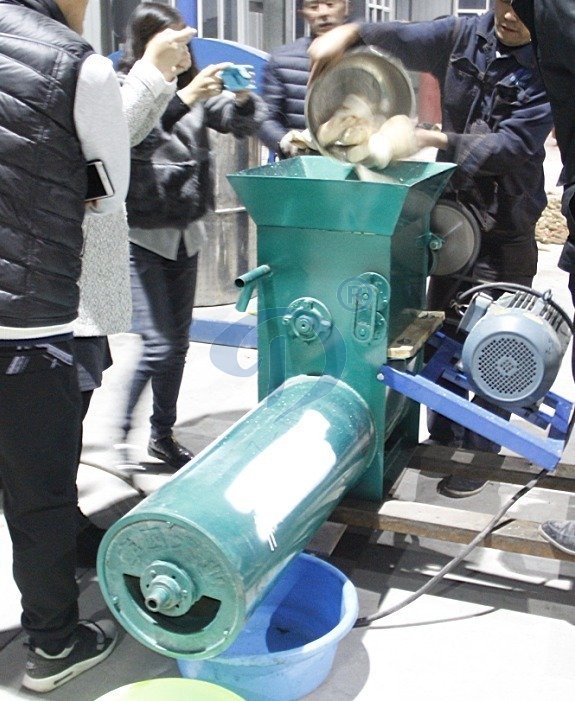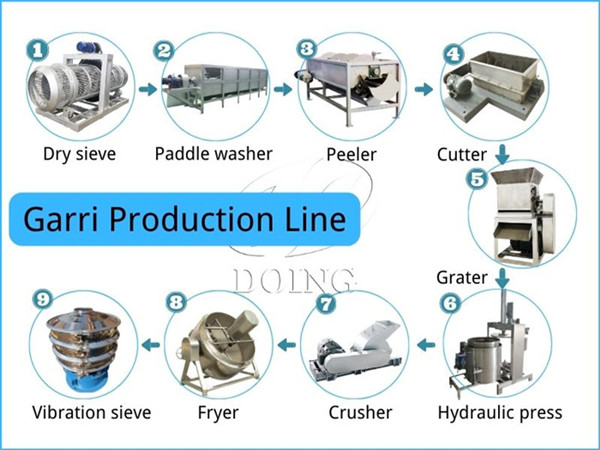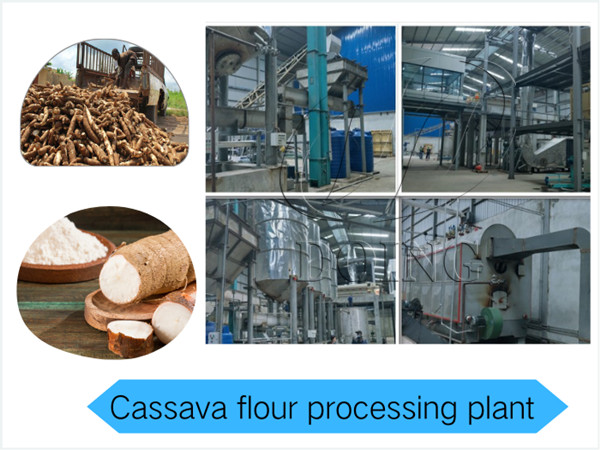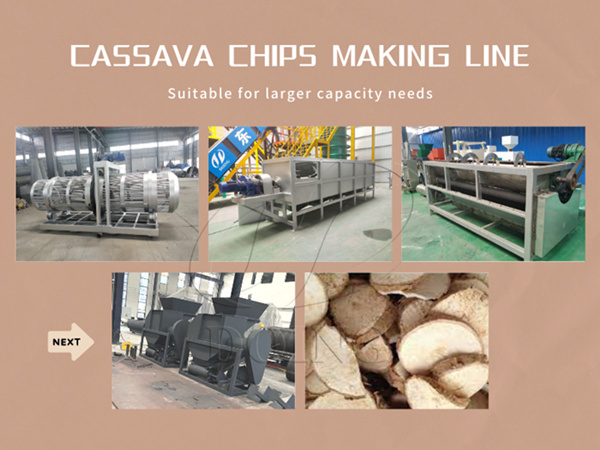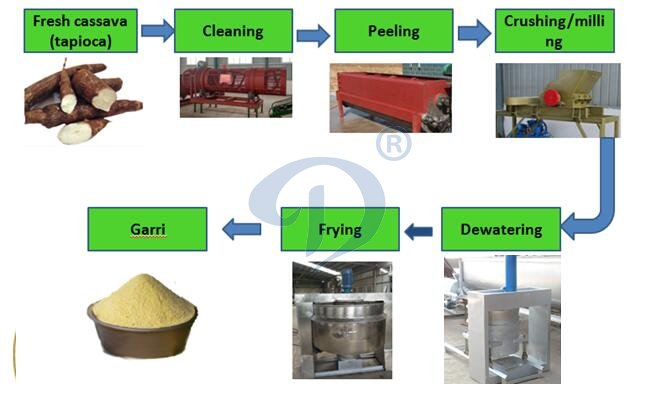
Garri production process
Cassava is a major staple crop in Nigeria, as cassava itself and its product are found in the daily meals of Nigerians.Cassava is a tuberous root that has a shelf life of 2 to 3 days. Once harvested, it has to be either consumed immediately or processed into more stable product forms.
Gari is dry, crispy, creamy-white and granular. It is estimated that 70% of the cassava produced in Nigeria is processed into gari. As a result, gari is the most commonly traded cassava product.
The production process of garri from cassava include cassava sorting , cassava peeling and washing , cassava grating , cassava mash dewatering, garri frying , sieving and packing . The detail garri production process as below :
1. Sorting of garri production process :
After harvest, some roots may be damaged or rotten. These are sorted to select the wholesome roots for processing; only healthy roots (without rot or other damage) should be processed.
2. Peeling and washing of garri production process :
Freshly harvested cassava roots are covered with soil and dirt and. The roots are peeled to remove the outer brown skin and inner thick cream layer and washed to remove stains and dirt. The water source should be checked regularly to ensure it is not dirty or contaminated.
3. Grating of garri production process :
As part of the process to remove the cyanide and make the root safe to eat, the peeled cassava are grated into a mash or pulp. Mechanized graters are needed to produce a sufficient quantity of cassava mash to meet market demands and standards.
Casssva grating machine for making garri
4. De- watering and fermenting of garri production process :
This completes the process of removing cyanide from the cassava mash. The water content in the mash is reduced using hydraulic press. The bags are then left to drain and ferment for a few days.
5. Granulating of garri production process :
The cake is mechanically reduced in size to produce fine granules of greater surface area – known as grits.
6. Garri frying of garri production process :
The grits are then roasted or fryed in a hot frying tray or pan to form the final dry and crispy product. Gari is normally white or cream, but will be yellow when made from yellow cassava roots or when fried with palm oil. It is important to make sure the taste and smell is acceptable to local consumers. Yellow cassava roots and palm oil are rich in vitamin A and therefore make nutritious gari. The roasted gari are spread on a raised platform in the open air to cool and dry.
7. Sieving of garri production process :
The Gari is sieved to separate coarse particles, with a standard size sieve to produce fine granules. A grinder is used to break the large granules into smaller ones. The
8. Packaging of garri production process :
The gari are weighed and then packed for marketing.


